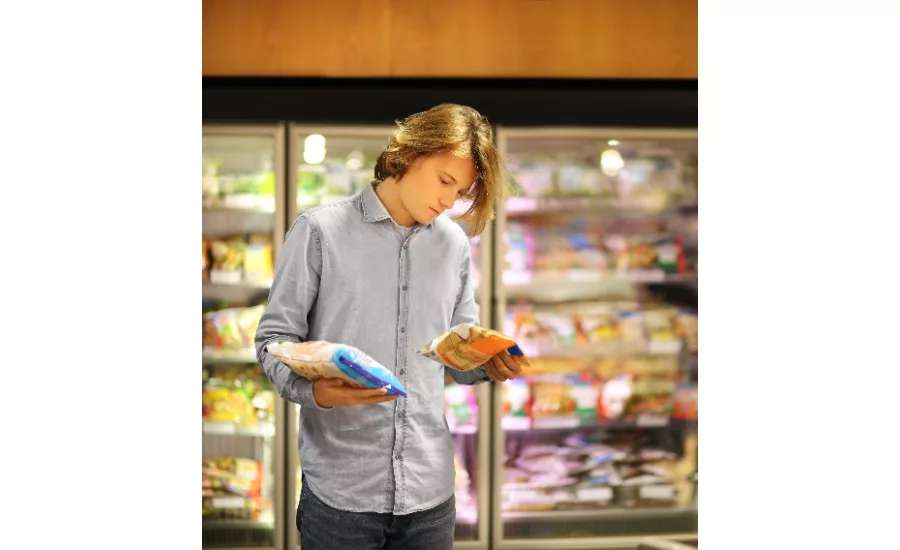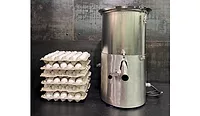Packaging
How packaging can inform and support plant-based meat consumers

Plant-based meats that utilize flexible packaging can educate consumers on product and packaging benefits while offering an improved consumer experience.
Photo courtesy of Fresh-Lock
Fueled by brands like Impossible Foods and Beyond Meat products, the meteoric rise of plant-based meat made 2019 the year it reached mainstream awareness. Forty percent of Americans gave it a try, and 60% of them are likely to keep eating it (Gallup). The U.S. plant-based meat industry is projected to hit $4.15 billion by 2026, according to Global Market Insights.
For shoppers encountering plant-based meats alongside their animal-based counterparts, the side-by-side placement of the products offers a powerful invitation for comparison and trial. As the plant-based meat category continues to grow, brands must understand that packaging is an important factor in keeping people coming back for more. Choosing flexible packaging can help align products with consumer preferences and brand initiatives.
What consumers say about plant-based meat packaging
The plant-based meat industry has used claims and packaging structures similar to those of conventional meat. This caught the attention of the National Cattlemen’s Beef Association. It conducted research focused primarily on packaging for plant-based ground beef and patties. Less than half of consumers understood the labeling term “plant-based beef.” Confusion about cattle imagery and claims like “even meatier” led to questions about whether the product was entirely vegan.
Utilizing packaging similar to that of animal-based meat can grow initial product awareness, especially when new offerings are placed next to existing products on store shelves. Consumers must first be able to find the product before they can try it, and the meat aisle is already very familiar to them. However, plant-based meat brands that differentiate themselves with better packaging solutions can avoid confusion about product ingredients and environmental benefits while offering a more user-friendly experience.
Using flexible packaging to educate and inform
Nielsen finds that 39% of products that achieve a plant-based diet do not specify being clean, simple, sustainable or free from artificial ingredients on their product labels.
Flexible packaging can support education about plant-based meats by presenting the right message for each product with a consistently bold billboard. With advancements in flexographic and digital printing, flexible packaging can include clear imagery and text that defines exactly what the product is made of.
A great example of this is the Plant Based Foods Association Certified Plant Based seal program, the first plant-based food certification. The icon from this program can be used on plant-based product packaging to grow consumer confidence in the benefits of plant-based. With flexible packaging, the Certified Plant Based seal can be prominently displayed alongside other educational information, such as environmental benefits. QR codes and augmented reality-enabled packaging allows brands to create an interactive experience for consumers as they learn about the benefits of both the product and the packaging.
Green packaging for a green product
For many consumers, the move to plant-based meats is a step toward a sustainable lifestyle and a better future for the planet. According to Nielsen, 61% of consumers concerned about the impact of livestock on climate change would reduce their meat consumption, and 43% would replace animal-based protein with plant-based. Environmentally conscious consumers are also often concerned about the sustainability of packaging.
Flexible packaging with compatible closures amplifies your brand’s environmental commitment. The light weight of flexible packaging results in a smaller carbon footprint compared to rigid packaging by reducing fossil fuel and water usage and lowering greenhouse gas emissions. Additionally, flexible packaging can help reduce transportation requirements, materials to landfill, and food waste. Consumers who purchase multiple-serving packages can reseal the package for the next usage occasion and avoid wasting the food.
Flexible packaging and the advancement of mono-material films and compatible closures offer fully recyclable options for many commercial markets like dried goods such as cereals, and baking ingredients. These packages can include the How2Recycle standardized labeling system to clearly explain how they should be recycled after consumer use. The protein segment of the store will begin to benefit from technology advancements in flexibles as well.
A natural partner for plant-based meats
Plant-based meats have an opportunity to create a better consumer experience when it comes to packaging. As the category continues to grow, flexible packaging offers more advanced technologies to match the level of innovation in these products.
Mainstream availability, increased varieties and the versatility of plant-based meat will continue to fuel the consumer appetite for even more innovation. Future customers might even shop the ‘protein’ section instead of the meat department. Together, plant-based meats paired with flexible packaging can attract, educate and drive long-term adoption.
Looking for a reprint of this article?
From high-res PDFs to custom plaques, order your copy today!









